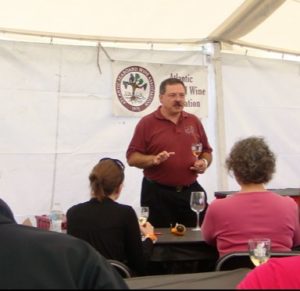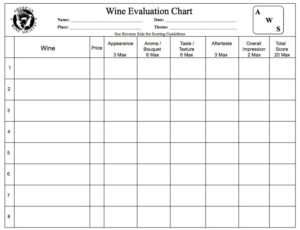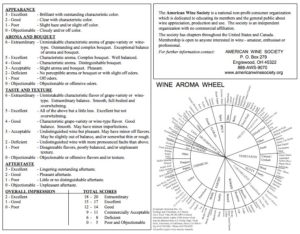Wine judging has been a bit of a mystery topic to me topic, but thanks to the Wine Judging Made Simple seminar at Sunday’s 36th Annual Virginia Wine Festival, I now have a great understanding of the process!
Walter Rachele, a graduate of the American Wine Society Wine Judge Training Program and judge in their commercial wine competitions, spent an hour with us on the basics of wine judging. After a brief helpful introduction, he led us through our first judging as a group using the standard U.C. Davis School of Oenology Scoring Sheet.  Then we judged three more wines at our tables.

Here’s how it works. The U.C. Davis Scoring Sheet is a 20 point system that judges wine on Appearance, Aroma(of the grape variety)/Bouquet (of the wine), Taste/Texture, Aftertaste, Overall Impression to get a total score.
- 18-20 are Extraordinary = Gold Medal
- 15-17 are Excellent = Silver Medal
- 12-14 are Good = Bronz Medal
- 9-11 are Commercially Acceptable
- 6-8 are Deficient
- 0-5 are Poor and Objectionable.
This is what the sheet looks like. To get you started on judging, you’re told what grape variety or varieties the wine is so you can judge appropriately.
 |
 |
I was extremely surprised how overall simple it is! It does require a basic understanding of each grape varieties classic characteristics (I used my cheat sheet on my iPhone from my session at the Wine Bloggers Conference in July) so you can accurately judge the wine. And you MUST leave your preferences at the door. I’m not an oakey chardonnay fan but I should still be able to judge the wine in the 5 categories above.
As the nose can get ‘tired’ smelling glass after glass, Walter shared a trick with us…run your nose along your arm to ‘clear’ the scents (note no lotions or perfumes are allowed).
Wine judging…a great way to increase your knowledge of wine, educate friends or even become a pro!
